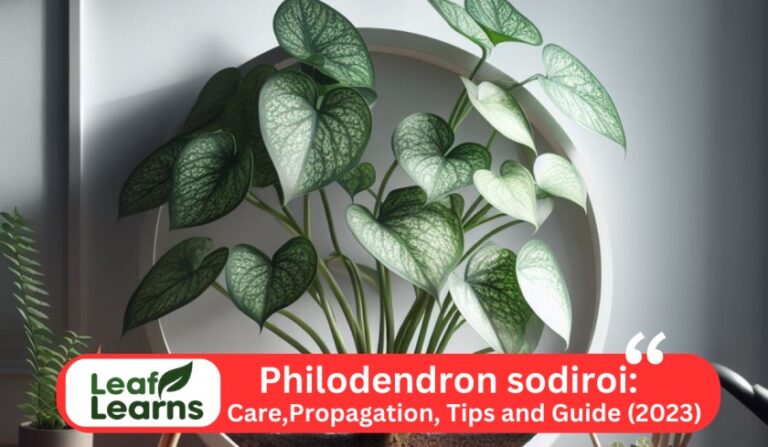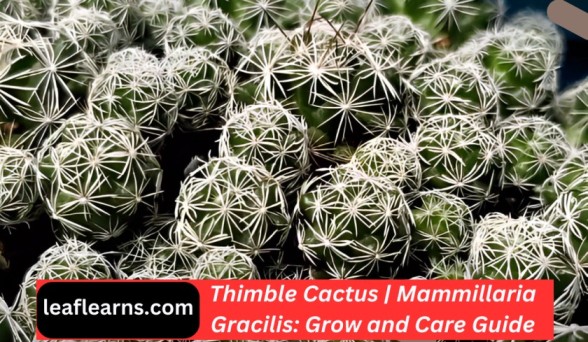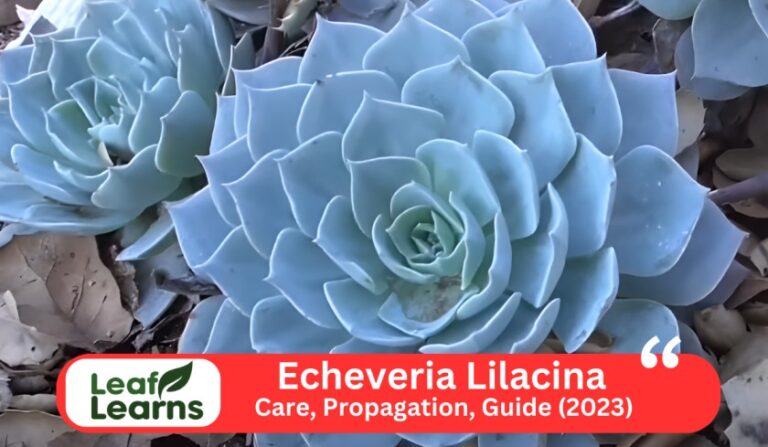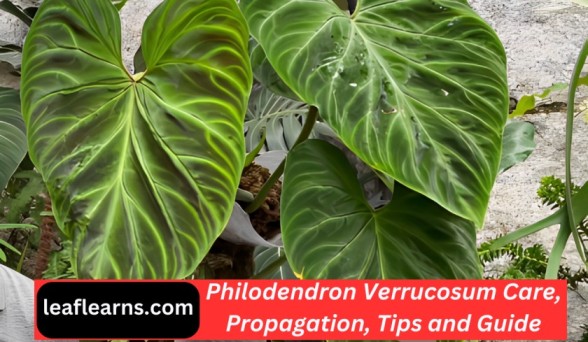Pink Allusion Arrowhead Plant Care Guide- Leaflearns (2024)
Also known scientifically as Syngonium podophyllum, the Pink Allusion Arrowhead Plant has become a showstopper for many perennial houseplant lovers due to its beautiful variegated color on its leaves.
Starting from a cultivated hybrid, it features small to medium-shaped leaves in an array of variegated tones of pink, therefore creating a truly eye-catching presence in any indoor area.
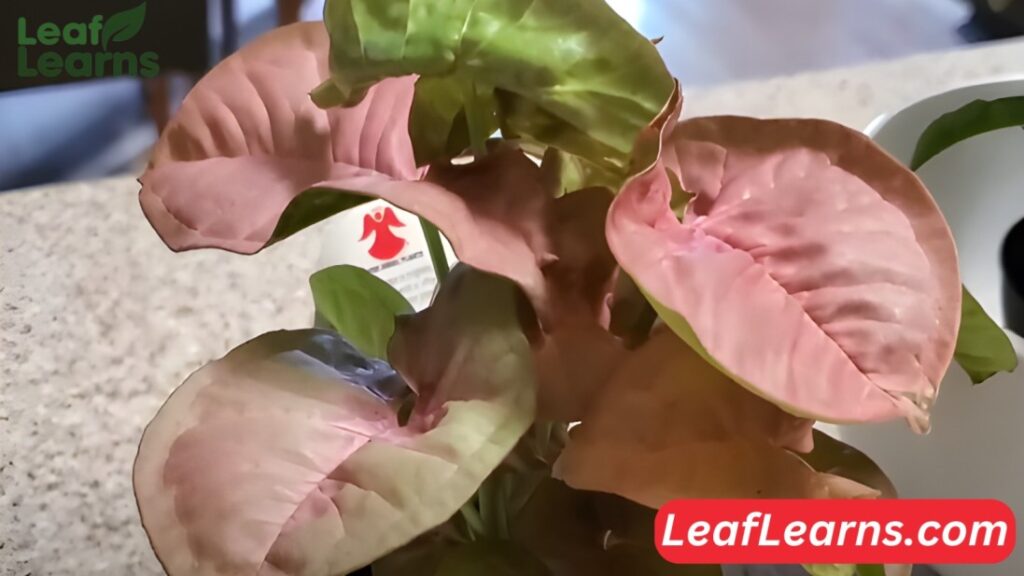
The Pink Allusion Arrowhead Plant finds the factor that makes it unique in its high humidity requirements together with its choice of indirect, bright light.
| Attribute | Information |
| Common Name | Pink Allusion Arrowhead Plant |
| Scientific Name | Syngonium podophyllum |
| Family | Araceae |
| Origin | Hybrid (cultivated) |
| Plant Type | Perennial |
| Size | Small to medium |
| Lifespan | Long |
| Leaf Colour | Variegated shades of pink |
| Leaf Size | Medium |
| Flower | Rarely flowers indoors |
| Light | Indirect, bright |
| Water | Moderate, allow soil to dry slightly between waterings |
| Soil | Well-draining, peat-based |
| Temperature | 60-85°F (15-29°C) |
| Humidity | Moderate to high |
| USDA Zone | 10-12 |
| Fertilizer | Balanced liquid fertilizer, monthly during growing season |
| Propagation | Stem cuttings, division |
| Pruning | Trim leggy growth as needed |
| Pests | Aphids, spider mites |
| Toxicity | Toxic to pets if ingested |

Contents
- 1 Pink Allusion Arrowhead Plant Care
- 2 Pink Allusion Arrowhead Plant Propagation
- 3 Pruning and potting your Pink Allusion
- 4 Growth Rate and Size
- 5 Flowering and Foliage
- 6 Common Pests and Diseases
- 7 Toxicity of the Pink Allusion Arrowhead Plant
- 8 Exploring the Diversity of Indoor Plants: From Syngonium Pink Allusion to Pink Dragon Alocasia
- 9 Cultivating a Knowledgeable Community: Language, Culture, and Safety in Indoor Plant Enthusiasm
- 10 FAQs
Pink Allusion Arrowhead Plant Care
Light Requirement
The Pink Allusion Arrowhead Plant prefers plentiful indirect, bright light.
Spring & Summer: Likes the bright filtered light resembling its original habitat. A north or east window providing filtered sun is the best option. Shield it from too much harsh sun in the afternoon that can burn off its delicate leaves.
Fall & Winter: Imitates the lower light but may lose the pink blush. Be sure to rotate your plant often to ensure that it gets even coverage. If located far from the windows, using grow lights might need careful when supplementing.
Water Requirements
The Pink Allusion Arrowhead likes drippy but not picky water, but allowing it to find the sweet spot keeps it alive and kicking.
Try to avoid uneven levels of moisture in the soil and let the top inch dry before re-watering. Adequate and regular watering during these active growing seasons is also critical.
Fall: With the days shortening, there is less ‘raining’. Let the soil dry on top two three inches before you top them up.
Pink Allusion Arrowhead Plant Soil
The potting mix should consist of materials that drain well such as orchid bark or perlite. When the topmost layer of the soil goes dry, water till you get slight moisture retention for active growth.
Choose a slightly thicker mix with the addition of organic components such as coco coir and peat moss. Incorporating an increase in temperature, and water more often to ensure that the soil is always moist and not saturated since higher temperatures lead to more thirst.
Replace a heavier mix with one that drains better to avoid overwatering. Water every two weeks until the root is not damaged by cold soils in winter.
Temperature and humidity Requirement
Have temperatures running between 75-85 degrees Fahrenheit or 24-29 degrees Celsius. A humidity of 50-70% is ideal given adequate moisture, so consider adding a humidifier to your setup or placing a pebble tray underneath.
Winter: Maintain comfortable room temperature between 65-75°F (18-24°C) degrees. Keep the humidity within a range of 40 to 50% and lessen on watering as growth ebbs out. Shield from cold currents and never set near heaters.
Spring & Fall: These are the intermediate seasons between winter and summer and they prefer temperatures akin to summer conditions (70-80°F, 21-27°C).
Adjusting the humidity according to your comfort level, adjust whether you are using artificial heating or air conditioning slightly higher.
Fertilizer and Potting Requirement
For the Pink Allusion, administer a balanced, weak fertilizer solution, dissolved into half-strength quantities every 2-4 weeks.
Select light in moderate conditions and water according to the top inch of soil drying out. Misting occasionally during warmer spells for happier leaves.
Fall: As the days grow shorter; slowly make the fertilization period a once in month. Keep moderate, shaded light and water according to drying growing medium, slightly less in cold.
Stop fertilization and water even less frequently to allow the soil drain very almost completely between waterings. Avoid any draft, and divert from cold windows.
Potting Essentials: Go for a well-drained mixture such as the Aroid mix enriched with perlite. Go for a pot with the small round holes, slightly larger than the root ball. Repot when roots start to crowd the pot, generally after every 1-2 years in spring or summer.
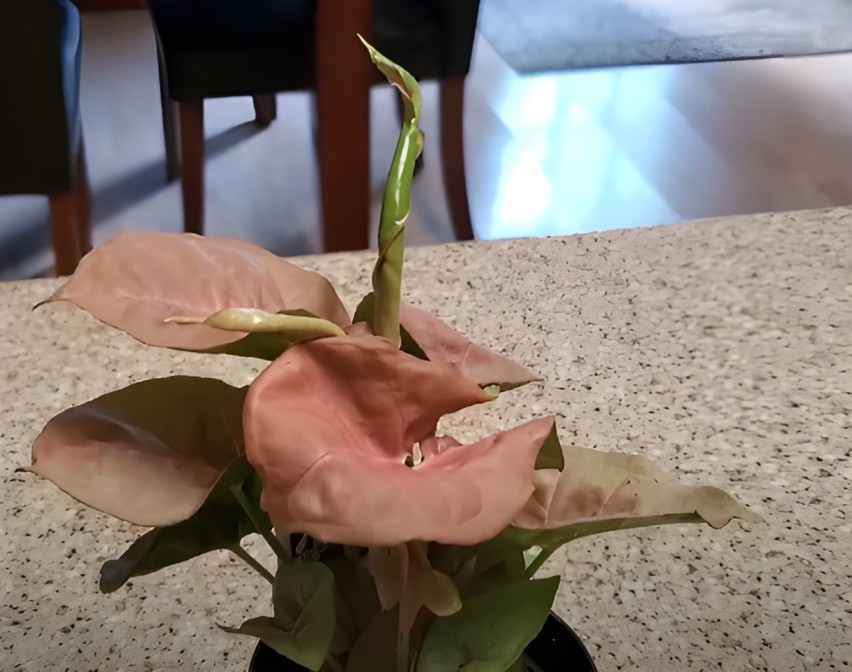
Pink Allusion Arrowhead Plant Propagation
The Pink Allusion Arrowhead, with its enchanting foliage, is easily shared through propagation. Here are two popular methods to fill your home (or gift others) with this captivating vine:
Stem Cuttings
What you’ll need:
- Sharp, sterilized pruners or scissors
- Glass or jar (for water propagation)
- Potting mix (for soil propagation)
- Optional: Rooting hormone
Steps
- Choose a healthy stem: Choose a healthy stem; it should be actively growing, having 2-3 nodes (bumps where the leaves sprout).
- Make the cut: For about an inch below the node, make a precise perpendicular cut of 4-6 inches with the stem.
- Root in water: Cut the stem of clover lower down below bud and put it in a glass of clean water, so that at least one node is immersed into the water. The roots will begin to appear in 2-4 weeks.
- Root in soil: That being the case, put a pot full of well-drained potting mix on. The cut end can be dipped in rooting hormone (optionally) and planted, one node underneath. Sprinkle with water lightly, make sure that the soil is never soggy.
- Transfer to soil: However, when roots developed in water reach the length of 1-2 inches, take great care to pot them up into well-draining soil.
- Offer light that is bright, indirect source of light and constantly moist conditions.
Layering Method
What you’ll need:
- Sharp, sterilized knife
- Sphagnum moss
- Plastic wrap or bag
Steps
- Choose a mature stem: Choose a lengthy node and grow stem which has several nodes.
- Make a small wound: Slowly, cut through the stem at a low angle of about halfway length from a node.
- Apply moss: Tie a strip of wet sphagnum moss over the wounded area and secure it using string or a thread.
- Encase in plastic: Enclose the entire soil covered with moss inside a plastic wrap or bag to create a wet environment.
- Monitor and wait: To keep the moss moist or mist occasionally and provide bright, indirect light. A number of roots should have grown around the wound in 4- 6 weeks.
- Cut and pot: Roots will take hold, and once they do, cut below the moss-wrapped region and pot of the new plant in well-draining soil.
Pruning and potting your Pink Allusion
Prune your Pink Allusion regularly to curb its cozy, bushy shape. When the spring or summer season advances, you should cut the leggy stems just above leaf nodes; the shoots develop on these nodes and make a fuller plant.
Pinching off growing tips should happen occasionally for the plant to grow branches and be leafier. As this plant is quite not fussy, do not get over concerned with minute details.
Repot it in spring or summer when the Pink Allusion’s roots fill his pot. Select a vase slightly narrower, 1-2 inches only, transferring the plant in fresh potting mix.
For the roots, loosen it gently, release any tangled roots, and put the plants in the new pot. Soak it well; your healthy Pink Allusion is now a part of your new home.
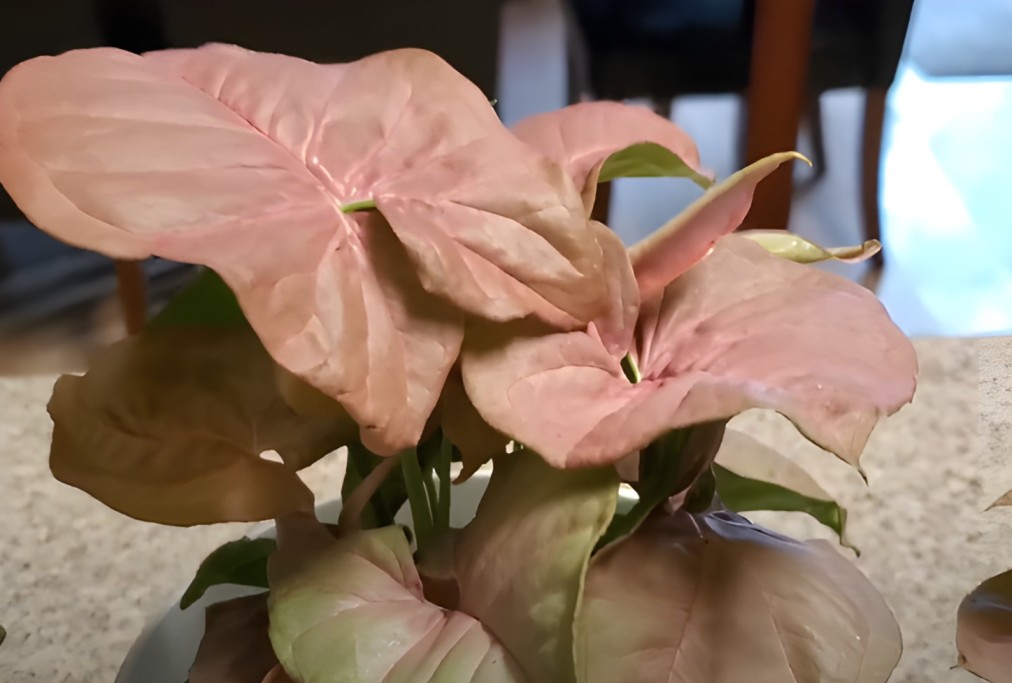
Growth Rate and Size
The Pink Allusion Arrowhead boasts of rapid growth, adding typically up to 12 inches annually. Give it enough care and it can grow to a fully mature size of 3-6 feet tall and 1-2 feet wide.
It grows naturally in a climbing fashion, and as such, it can thrive given support such as by a moss pole or trellis while allowing its trailing stems and cascading foliage to be displayed.
Flowering and Foliage
Although the Pink Allusion Arrowhead is predominantly focused on the vegetative part, it rakes small white flowers in the summer season. However, the real master in the show is its leaves.
Unlike the majority of arrowhead cultivars, however, this one is a simply stunning shade of pink blush on its green leaves; the contrast between the two colors is beautiful.
Common Pests and Diseases
Despite its bulwark of resilience, however, Pink Allusion Arrowheads may succumb to a few common houseplant pests.
Speaking about the webs, spider mites are minute sap-feeders whose marks are typical webs and spotted leaves.
Mealybugs suck sap from plants in clusters that are cottony white in appearance. Both can be handled through the usage of neem oil or insecticidal soap.
Fungus gnats that love to spend time in moist soil can be discouraged by not watering the soil too often, and allowing the soil to dry between pourings.
The greatest cause for concern with your Pink Allusion is the danger of root rot following watering. Indicators are soft stems and yellow or drooping leaves.
Fungal leaf spot symptoms show as brown or tan lesions; these can be controlled by removing infected leaves and creating good air circulation.
Powdery mildew, a form of fungi that appears as a white powdery coating, is most common in humidity.
Toxicity of the Pink Allusion Arrowhead Plant
Pink Allusion Arrowhead Plant is middly toxic to Humans, Cats and Dogs. The sap is poisonous because it contains Calcium oxalate crystals and if touched either causes irritation or pain.
That causes the deterioration of the process through different symptoms such as burning, mouth swelling, and vomiting.
Pink Allusion Arrowhead Plant toxic to Cats
Pink Allusion Arrowhead Plant is toxic to Cats & Dogs. Consumption or simply the chewing of the leaves causes a similar calcium oxalate reaction, manifesting as drooling, nausea, and pain.
In the most severe instances, seizures may also appear. If the poisoning is suspected, consult a vet as soon as possible.
Exploring the Diversity of Indoor Plants: From Syngonium Pink Allusion to Pink Dragon Alocasia
The world of indoor plants offers a diverse array of species and varieties to choose from, ranging from the delicate Syngonium Pink Allusion to the striking Pink Dragon Alocasia.
Enthusiasts often find themselves captivated by the unique traits and characteristics of each plant, whether it’s the vibrant foliage of the Quadrophonic Pink Floyd or the elegant vines of the Arrowhead Vine. Understanding the care requirements is paramount for nurturing these botanical beauties.
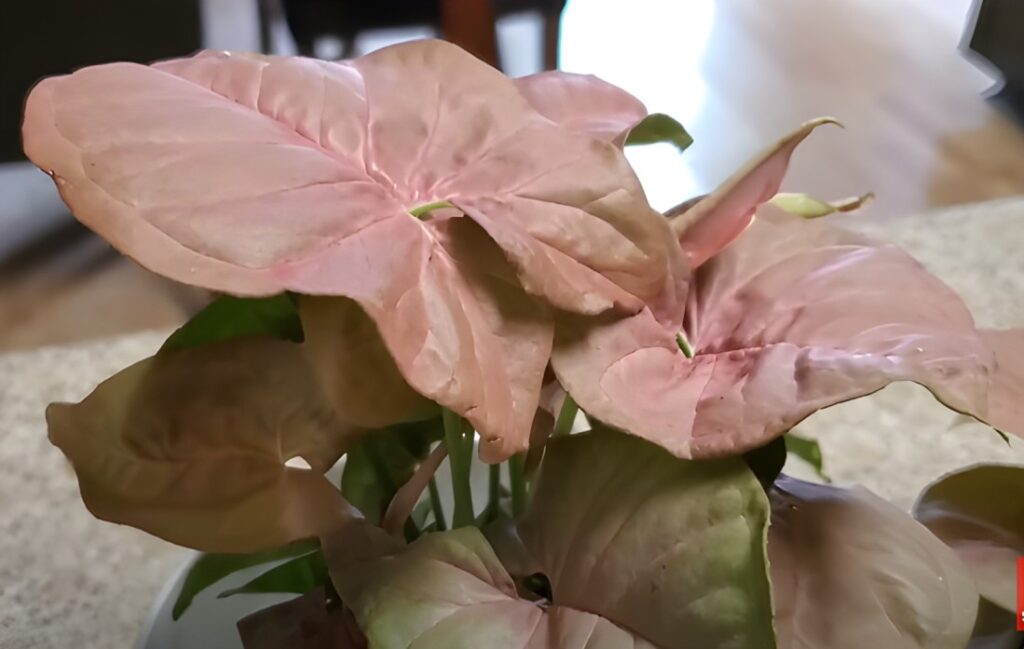
For instance, those who bring home a Pink Allusion Arrowhead Plant must be mindful of its sensitivity to cats, ensuring it’s kept out of reach of curious feline companions.
Furthermore, knowing the specific soil needs and propagation techniques, such as those detailed for the Pink Allusion Arrowhead Plant, ensures optimal growth and longevity for these prized specimens.
Cultivating a Knowledgeable Community: Language, Culture, and Safety in Indoor Plant Enthusiasm
In the realm of plant enthusiasts, the quest for acquiring new additions to one’s collection is an ever-present pursuit. Whether browsing online nurseries or seeking out rare finds at local plant sales, the allure of adding a Pink Allusion Arrowhead Plant to one’s indoor oasis is undeniable.
However, beyond the acquisition lies a responsibility to understand the cultural and language nuances associated with these botanical treasures.
From learning about the plant’s origins in countries like Japan to navigating discussions about its care in different languages, such as German (deutsch), enthusiasts immerse themselves in a rich tapestry of plant culture.
Amidst this passion for plants, concerns about toxicity and safety emerge, prompting inquiries into the potential risks posed by certain species, like the Arrowhead Plant, to beloved pets like cats. As such, a well-rounded understanding of plant care, acquisition, and safety is essential for fostering a thriving indoor garden ecosystem.
FAQs
How do you take care of a pink arrowhead plant?
Light: It requires bold, diffused lighting in order for it to produce vibrant pink tones. It should be grown in partial shade rather than full sunlight so that the leaves are not scorched.
Water: Dampen the soil before each watering so that it dries out between applications in order to prevent root rot. Survey the top inch of soil, and water well in case it dries.
Humidity: Requires more humidity but adjusts to the average humidity levels found in houses. Misting, pebble trays or humidifiers are one source of energy boost.
Temperature: Don’t let it drop below 60°F or above 85°F (15°C and 29°C) ensure that it remains comfortable throughout. Don’t let drafts and large temperature changes occur.
Is the pink allusion arrowhead plant poisonous?
The ingestion of this plant proves to be poisonous to man and animals. These leaves and the sap also have an irritant effect, being associated with calcium oxalate crystals that lead to edema, rubefacient action and sometimes even vomiting. If your child or pet gets to it, keep it out of their reach.
How big does a pink allusion arrowhead plant get?
As a compact variety, it typically reaches 2-3 feet (60-90 cm) in height when potted. With support, it can climb and vine up to 4 feet (1.2 meters).
Is the arrowhead plant lucky?
There are different symbols of plants in various cultures, and scientific evidence does not prove a direct line to the luck that would be conferred by the Pink Allusion Arrowhead. But, its aesthetic and air-refreshing nature is something that definitely makes a positive aura in the house.

